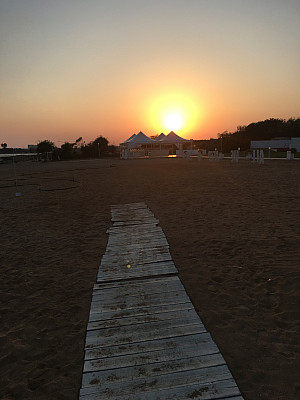September 17, 2018
Open gallery Georgie's summer in Cyprus
Prev » <picture class="lw_image"> <source type="image/webp" media="(max-width: 500px)" srcset="/live/image/gid/66/width/500/8825_9DA4ABD8-EF10-4888-972D-8987FE6305C6.rev.1537229064.webp 1x, /live/image/scale/2x/gid/66/width/500/8825_9DA4ABD8-EF10-4888-972D-8987FE6305C6.rev.1537229064.webp 2x, /live/image/scale/3x/gid/66/width/500/8825_9DA4ABD8-EF10-4888-972D-8987FE6305C6.rev.1537229064.webp 3x"/> <source type="image/webp" media="(min-width: 501px)" srcset="/live/image/gid/66/width/640/8825_9DA4ABD8-EF10-4888-972D-8987FE6305C6.rev.1537229064.webp 1x, /live/image/scale/2x/gid/66/width/640/8825_9DA4ABD8-EF10-4888-972D-8987FE6305C6.rev.1537229064.webp 2x, /live/image/scale/3x/gid/66/width/640/8825_9DA4ABD8-EF10-4888-972D-8987FE6305C6.rev.1537229064.webp 3x"/> <source type="image/jpeg" media="(max-width: 500px)" srcset="/live/image/gid/66/width/500/8825_9DA4ABD8-EF10-4888-972D-8987FE6305C6.rev.1537229064.jpg 1x, /live/image/scale/2x/gid/66/width/500/8825_9DA4ABD8-EF10-4888-972D-8987FE6305C6.rev.1537229064.jpg 2x, /live/image/scale/3x/gid/66/width/500/8825_9DA4ABD8-EF10-4888-972D-8987FE6305C6.rev.1537229064.jpg 3x"/> <source type="image/jpeg" media="(min-width: 501px)" srcset="/live/image/gid/66/width/640/8825_9DA4ABD8-EF10-4888-972D-8987FE6305C6.rev.1537229064.jpg 1x, /live/image/scale/2x/gid/66/width/640/8825_9DA4ABD8-EF10-4888-972D-8987FE6305C6.rev.1537229064.jpg 2x, /live/image/scale/3x/gid/66/width/640/8825_9DA4ABD8-EF10-4888-972D-8987FE6305C6.rev.1537229064.jpg 3x"/> <img src="/live/image/gid/66/width/640/8825_9DA4ABD8-EF10-4888-972D-8987FE6305C6.rev.1537229064.jpg" width="640" height="853" alt="Georgie's summer in Cyprus" srcset="/live/image/scale/2x/gid/66/width/640/8825_9DA4ABD8-EF10-4888-972D-8987FE6305C6.rev.1537229064.jpg 2x, /live/image/scale/3x/gid/66/width/640/8825_9DA4ABD8-EF10-4888-972D-8987FE6305C6.rev.1537229064.jpg 3x" data-max-w="2400" data-max-h="3200" loading="lazy"/></picture>
Georgie's summer in Cyprus
<picture class="lw_image"> <source type="image/webp" media="(max-width: 500px)" srcset="/live/image/gid/66/width/500/8823_4E65A8F0-CE3F-4155-9904-CA0EFF5FBBC0.rev.1537229064.webp 1x, /live/image/scale/2x/gid/66/width/500/8823_4E65A8F0-CE3F-4155-9904-CA0EFF5FBBC0.rev.1537229064.webp 2x, /live/image/scale/3x/gid/66/width/500/8823_4E65A8F0-CE3F-4155-9904-CA0EFF5FBBC0.rev.1537229064.webp 3x"/> <source type="image/webp" media="(min-width: 501px)" srcset="/live/image/gid/66/width/640/8823_4E65A8F0-CE3F-4155-9904-CA0EFF5FBBC0.rev.1537229064.webp 1x, /live/image/scale/2x/gid/66/width/640/8823_4E65A8F0-CE3F-4155-9904-CA0EFF5FBBC0.rev.1537229064.webp 2x, /live/image/scale/3x/gid/66/width/640/8823_4E65A8F0-CE3F-4155-9904-CA0EFF5FBBC0.rev.1537229064.webp 3x"/> <source type="image/jpeg" media="(max-width: 500px)" srcset="/live/image/gid/66/width/500/8823_4E65A8F0-CE3F-4155-9904-CA0EFF5FBBC0.rev.1537229064.jpg 1x, /live/image/scale/2x/gid/66/width/500/8823_4E65A8F0-CE3F-4155-9904-CA0EFF5FBBC0.rev.1537229064.jpg 2x, /live/image/scale/3x/gid/66/width/500/8823_4E65A8F0-CE3F-4155-9904-CA0EFF5FBBC0.rev.1537229064.jpg 3x"/> <source type="image/jpeg" media="(min-width: 501px)" srcset="/live/image/gid/66/width/640/8823_4E65A8F0-CE3F-4155-9904-CA0EFF5FBBC0.rev.1537229064.jpg 1x, /live/image/scale/2x/gid/66/width/640/8823_4E65A8F0-CE3F-4155-9904-CA0EFF5FBBC0.rev.1537229064.jpg 2x, /live/image/scale/3x/gid/66/width/640/8823_4E65A8F0-CE3F-4155-9904-CA0EFF5FBBC0.rev.1537229064.jpg 3x"/> <img src="/live/image/gid/66/width/640/8823_4E65A8F0-CE3F-4155-9904-CA0EFF5FBBC0.rev.1537229064.jpg" width="640" height="853" alt="Georgie's summer in Cyprus" srcset="/live/image/scale/2x/gid/66/width/640/8823_4E65A8F0-CE3F-4155-9904-CA0EFF5FBBC0.rev.1537229064.jpg 2x, /live/image/scale/3x/gid/66/width/640/8823_4E65A8F0-CE3F-4155-9904-CA0EFF5FBBC0.rev.1537229064.jpg 3x" data-max-w="2400" data-max-h="3200" loading="lazy"/></picture>
Georgie's summer in Cyprus
<picture class="lw_image"> <source type="image/webp" media="(max-width: 500px)" srcset="/live/image/gid/66/width/500/8826_23A11310-2A6A-4D23-B5E3-40DB18CBCD29.rev.1537229064.webp 1x, /live/image/scale/2x/gid/66/width/500/8826_23A11310-2A6A-4D23-B5E3-40DB18CBCD29.rev.1537229064.webp 2x, /live/image/scale/3x/gid/66/width/500/8826_23A11310-2A6A-4D23-B5E3-40DB18CBCD29.rev.1537229064.webp 3x"/> <source type="image/webp" media="(min-width: 501px)" srcset="/live/image/gid/66/width/640/8826_23A11310-2A6A-4D23-B5E3-40DB18CBCD29.rev.1537229064.webp 1x, /live/image/scale/2x/gid/66/width/640/8826_23A11310-2A6A-4D23-B5E3-40DB18CBCD29.rev.1537229064.webp 2x, /live/image/scale/3x/gid/66/width/640/8826_23A11310-2A6A-4D23-B5E3-40DB18CBCD29.rev.1537229064.webp 3x"/> <source type="image/jpeg" media="(max-width: 500px)" srcset="/live/image/gid/66/width/500/8826_23A11310-2A6A-4D23-B5E3-40DB18CBCD29.rev.1537229064.jpg 1x, /live/image/scale/2x/gid/66/width/500/8826_23A11310-2A6A-4D23-B5E3-40DB18CBCD29.rev.1537229064.jpg 2x, /live/image/scale/3x/gid/66/width/500/8826_23A11310-2A6A-4D23-B5E3-40DB18CBCD29.rev.1537229064.jpg 3x"/> <source type="image/jpeg" media="(min-width: 501px)" srcset="/live/image/gid/66/width/640/8826_23A11310-2A6A-4D23-B5E3-40DB18CBCD29.rev.1537229064.jpg 1x, /live/image/scale/2x/gid/66/width/640/8826_23A11310-2A6A-4D23-B5E3-40DB18CBCD29.rev.1537229064.jpg 2x, /live/image/scale/3x/gid/66/width/640/8826_23A11310-2A6A-4D23-B5E3-40DB18CBCD29.rev.1537229064.jpg 3x"/> <img src="/live/image/gid/66/width/640/8826_23A11310-2A6A-4D23-B5E3-40DB18CBCD29.rev.1537229064.jpg" width="640" height="480" alt="Georgie's summer in Cyprus" srcset="/live/image/scale/2x/gid/66/width/640/8826_23A11310-2A6A-4D23-B5E3-40DB18CBCD29.rev.1537229064.jpg 2x, /live/image/scale/3x/gid/66/width/640/8826_23A11310-2A6A-4D23-B5E3-40DB18CBCD29.rev.1537229064.jpg 3x" data-max-w="3200" data-max-h="2400" loading="lazy"/></picture>
Georgie's summer in Cyprus
<picture class="lw_image"> <source type="image/webp" media="(max-width: 500px)" srcset="/live/image/gid/66/width/500/8827_36910D90-B931-486B-B4B7-F589D678348F.rev.1537229065.webp 1x, /live/image/scale/2x/gid/66/width/500/8827_36910D90-B931-486B-B4B7-F589D678348F.rev.1537229065.webp 2x, /live/image/scale/3x/gid/66/width/500/8827_36910D90-B931-486B-B4B7-F589D678348F.rev.1537229065.webp 3x"/> <source type="image/webp" media="(min-width: 501px)" srcset="/live/image/gid/66/width/640/8827_36910D90-B931-486B-B4B7-F589D678348F.rev.1537229065.webp 1x, /live/image/scale/2x/gid/66/width/640/8827_36910D90-B931-486B-B4B7-F589D678348F.rev.1537229065.webp 2x, /live/image/scale/3x/gid/66/width/640/8827_36910D90-B931-486B-B4B7-F589D678348F.rev.1537229065.webp 3x"/> <source type="image/jpeg" media="(max-width: 500px)" srcset="/live/image/gid/66/width/500/8827_36910D90-B931-486B-B4B7-F589D678348F.rev.1537229065.jpg 1x, /live/image/scale/2x/gid/66/width/500/8827_36910D90-B931-486B-B4B7-F589D678348F.rev.1537229065.jpg 2x, /live/image/scale/3x/gid/66/width/500/8827_36910D90-B931-486B-B4B7-F589D678348F.rev.1537229065.jpg 3x"/> <source type="image/jpeg" media="(min-width: 501px)" srcset="/live/image/gid/66/width/640/8827_36910D90-B931-486B-B4B7-F589D678348F.rev.1537229065.jpg 1x, /live/image/scale/2x/gid/66/width/640/8827_36910D90-B931-486B-B4B7-F589D678348F.rev.1537229065.jpg 2x, /live/image/scale/3x/gid/66/width/640/8827_36910D90-B931-486B-B4B7-F589D678348F.rev.1537229065.jpg 3x"/> <img src="/live/image/gid/66/width/640/8827_36910D90-B931-486B-B4B7-F589D678348F.rev.1537229065.jpg" width="640" height="853" alt="Georgie's summer in Cyprus" srcset="/live/image/scale/2x/gid/66/width/640/8827_36910D90-B931-486B-B4B7-F589D678348F.rev.1537229065.jpg 2x, /live/image/scale/3x/gid/66/width/640/8827_36910D90-B931-486B-B4B7-F589D678348F.rev.1537229065.jpg 3x" data-max-w="2400" data-max-h="3200" loading="lazy"/></picture>
Georgie's summer in Cyprus
<picture class="lw_image"> <source type="image/webp" media="(max-width: 500px)" srcset="/live/image/gid/66/width/500/8828_79982FA2-7403-4280-A498-3B4DDB734B55.rev.1537229065.webp 1x, /live/image/scale/2x/gid/66/width/500/8828_79982FA2-7403-4280-A498-3B4DDB734B55.rev.1537229065.webp 2x, /live/image/scale/3x/gid/66/width/500/8828_79982FA2-7403-4280-A498-3B4DDB734B55.rev.1537229065.webp 3x"/> <source type="image/webp" media="(min-width: 501px)" srcset="/live/image/gid/66/width/640/8828_79982FA2-7403-4280-A498-3B4DDB734B55.rev.1537229065.webp 1x, /live/image/scale/2x/gid/66/width/640/8828_79982FA2-7403-4280-A498-3B4DDB734B55.rev.1537229065.webp 2x, /live/image/scale/3x/gid/66/width/640/8828_79982FA2-7403-4280-A498-3B4DDB734B55.rev.1537229065.webp 3x"/> <source type="image/jpeg" media="(max-width: 500px)" srcset="/live/image/gid/66/width/500/8828_79982FA2-7403-4280-A498-3B4DDB734B55.rev.1537229065.jpg 1x, /live/image/scale/2x/gid/66/width/500/8828_79982FA2-7403-4280-A498-3B4DDB734B55.rev.1537229065.jpg 2x, /live/image/scale/3x/gid/66/width/500/8828_79982FA2-7403-4280-A498-3B4DDB734B55.rev.1537229065.jpg 3x"/> <source type="image/jpeg" media="(min-width: 501px)" srcset="/live/image/gid/66/width/640/8828_79982FA2-7403-4280-A498-3B4DDB734B55.rev.1537229065.jpg 1x, /live/image/scale/2x/gid/66/width/640/8828_79982FA2-7403-4280-A498-3B4DDB734B55.rev.1537229065.jpg 2x, /live/image/scale/3x/gid/66/width/640/8828_79982FA2-7403-4280-A498-3B4DDB734B55.rev.1537229065.jpg 3x"/> <img src="/live/image/gid/66/width/640/8828_79982FA2-7403-4280-A498-3B4DDB734B55.rev.1537229065.jpg" width="640" height="853" alt="Georgie's summer in Cyprus" srcset="/live/image/scale/2x/gid/66/width/640/8828_79982FA2-7403-4280-A498-3B4DDB734B55.rev.1537229065.jpg 2x, /live/image/scale/3x/gid/66/width/640/8828_79982FA2-7403-4280-A498-3B4DDB734B55.rev.1537229065.jpg 3x" data-max-w="2400" data-max-h="3200" loading="lazy"/></picture>
Georgie's summer in Cyprus
<picture class="lw_image"> <source type="image/webp" media="(max-width: 500px)" srcset="/live/image/gid/66/width/500/8829_D5F29397-51A0-4E34-9628-9ACB23941A95.rev.1537229065.webp 1x, /live/image/scale/2x/gid/66/width/500/8829_D5F29397-51A0-4E34-9628-9ACB23941A95.rev.1537229065.webp 2x, /live/image/scale/3x/gid/66/width/500/8829_D5F29397-51A0-4E34-9628-9ACB23941A95.rev.1537229065.webp 3x"/> <source type="image/webp" media="(min-width: 501px)" srcset="/live/image/gid/66/width/640/8829_D5F29397-51A0-4E34-9628-9ACB23941A95.rev.1537229065.webp 1x, /live/image/scale/2x/gid/66/width/640/8829_D5F29397-51A0-4E34-9628-9ACB23941A95.rev.1537229065.webp 2x, /live/image/scale/3x/gid/66/width/640/8829_D5F29397-51A0-4E34-9628-9ACB23941A95.rev.1537229065.webp 3x"/> <source type="image/jpeg" media="(max-width: 500px)" srcset="/live/image/gid/66/width/500/8829_D5F29397-51A0-4E34-9628-9ACB23941A95.rev.1537229065.jpg 1x, /live/image/scale/2x/gid/66/width/500/8829_D5F29397-51A0-4E34-9628-9ACB23941A95.rev.1537229065.jpg 2x, /live/image/scale/3x/gid/66/width/500/8829_D5F29397-51A0-4E34-9628-9ACB23941A95.rev.1537229065.jpg 3x"/> <source type="image/jpeg" media="(min-width: 501px)" srcset="/live/image/gid/66/width/640/8829_D5F29397-51A0-4E34-9628-9ACB23941A95.rev.1537229065.jpg 1x, /live/image/scale/2x/gid/66/width/640/8829_D5F29397-51A0-4E34-9628-9ACB23941A95.rev.1537229065.jpg 2x, /live/image/scale/3x/gid/66/width/640/8829_D5F29397-51A0-4E34-9628-9ACB23941A95.rev.1537229065.jpg 3x"/> <img src="/live/image/gid/66/width/640/8829_D5F29397-51A0-4E34-9628-9ACB23941A95.rev.1537229065.jpg" width="640" height="853" alt="Georgie's summer in Cyprus" srcset="/live/image/scale/2x/gid/66/width/640/8829_D5F29397-51A0-4E34-9628-9ACB23941A95.rev.1537229065.jpg 2x, /live/image/scale/3x/gid/66/width/640/8829_D5F29397-51A0-4E34-9628-9ACB23941A95.rev.1537229065.jpg 3x" data-max-w="2400" data-max-h="3200" loading="lazy"/></picture>
Georgie's summer in Cyprus
Next »
Summer of 2018 was one filled with exuberant excitement for my upcoming research, but also one jam-packed with the anxiety of conducting fieldwork without my professors and fellow Environmental students for the first time. 5,460 miles across the world I was given the opportunity by the Benjamin Gilman Scholarship Foundation, and the Cyprus Sustainable Tourism Initiative (CSTI), to travel to the Independent Republic of Cyprus and conduct my data collection for my final project here at Purchase.
Being someone of native-Cypriot descent (with around 90% of my family still residing there), I knew only of the environmental issues that my family and friends described as plaguing our country. Cyprus being an island smaller than the state of Connecticut, individual impacts of environmental issues/disasters can be felt immediately and on a wider scale. On top of that, the island’s geographic location (Immediate neighbors of Syria, Turkey, and Lebanon), makes the area warm almost year-round, attracting mass amounts of diverse Mediterranean wildlife, including two species of large sea-turtles. Since the Independent side of Cyprus joined the European Union in 2004, its endured a steady rising influx of European tourism over the years. While this is great for the economy, new and unresolved waste issues shocked the island. Waste, especially that of plastic, started to pile-up in drastic amounts with the hotel/resort industry booming. Plastic waste made its way into the nests and stomachs of Cyprus’ endemic birds, and riddled the vast, biodiverse ocean life with micro and macro plastics in their habitats, breeding beaches, and food supply. Considering the country is surrounded by water, and much of the tourist industry is quite close to the coasts, a large amount of the plastic waste easily drifts into the sea and consequently into the coastal marine-life environment.
This fact became one of much concern for allot of Cyprus’ permanent residents. They introduced some legislations to combat the plastic waste, that was generally well-received by the public. But this brought up some questions of my own for what the island can do to most effectively protect its ancient beauty and biodiversity. Questions such as, what economic boundaries are producing the most plastic waste? What type of plastic is most abundantly found on the beaches? Should legislations really be targeting the Cypriot people, or the tourist industry itself? This led me to my field-work, which involved visiting as many coastal beaches as I possibly could, and logging each and every piece of littered plastic I found by origin and type. All recordings from each location were kept consistent by time, size, etc. By far, Cyprus’ beaches were some of the most beautiful and full of life I have ever had the pleasure of seeing (including pictures). It would be a shame to see a hub for biodiversity go to waste because of our often stern inability to change, and occasionally our lack of respect for places we don’t live. While I still have a year to process my data, I’m hoping it will end with some clear answers to what areas need to be targeted first in terms of initiative to combat plastic waste.
I hope the pictures do the island justice!
